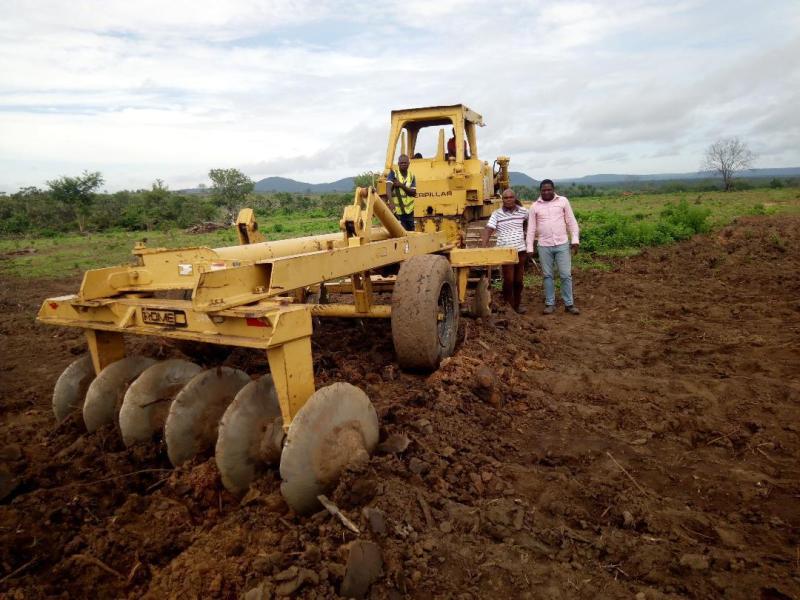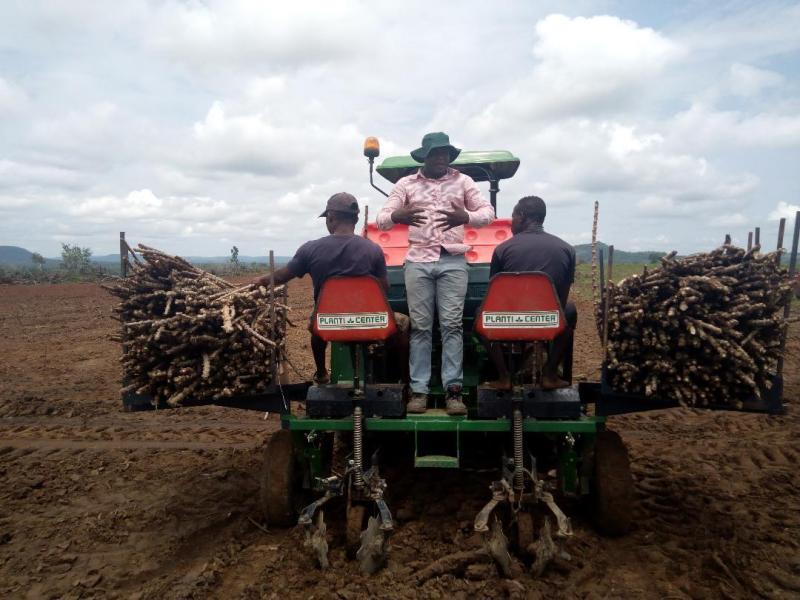Cassava Propagation and Planting

This post is also available in:
This post is also available in:
![]() Français (French)
Français (French) ![]() Türkçe (Turkish)
Türkçe (Turkish)
Cassava cultivation and propagation
The cultivation of cassava always starts with stem cuttings. These cuttings are planting materials obtained from the stem of cassava plants harvested and at least 10 months old. Once the cassava tubers are harvested, the stems are cut off from the tubers, and the leaves are removed. Then the stems are stored in a dry and cool place for the next planting season. It has been observed that stem cuttings below the base of the plants give good starch yields. Cuttings material from the upper stems produced fewer yields [1,2,3]. It is thus recommended that farmers make use of cuttings from the lower part of the stem. A good stem cutting for planting cassava should:
- Be 20-30 cm long and about 1.5-4.0 cm thick,
- Have 2 to 3 viable buds [4,5,6]
Taking 1/3 of the total length of the stem from the top is considered the best for planting.


Methods applied in cassava planting
Cassava cuttings can be planted in the soil by:
- By hand
- By planting machines.
There are two ways one can use in planting cuttings by hand. These include vertical and flat planting. There are benefits and challenges these planting methods pose to cassava propagation. For instance, in the case of low rainfall, cassava cutting propagated by vertical means may become dehydrated. In the case of higher rainfall, cassava cutting propagated by flat-planting may suffer from stem rot. Overall, in flat planting 5-10 cm below the soil, mechanical planting is recommended in extremely hot climate regions. Above all, vertical planting is employed in rainy areas. Vertical planting is most preferred because of the uniformity of the formation of plant tissues that aid the formation of cassava tubers around the plant base.
Germination is observed for stem cuttings cultivated on flat soil, ridges or hills, yet the production level seems different. For instance, experimental studies [3,4] have shown that stem cuttings propagated in ridges produced lower cassava tubers than flat in cultivation. Less workforce is needed for weeding and harvesting of cassava tubers ridge planting. Hill planting is thus recommended for one stake per hill. There is a tendency for planting two stakes per hill increases the yield of cassava plants. This may allow many tubers per plant, but the tuber size is reduced. This may affect the market quality for export purposes.
There are no established mechanical means used for planting. Because machine planting cannot be made possible without furrows and ridges, a flat field is thus recommended for machine planting. Here in Nigeria, planting by hand is the most popular type of planting cassava cuttings. Though mechanical planters are used to propagate cassava cuttings horizontally, this mode of planting has not been shown to produce maximum cassava yield compared to planting by hand.
Cassava cultivation and propagation are influenced by climate and weather conditions as well as the planting materials available. The best planting time for cassava is usually at the beginning of the rainy season. In regions with all-around rainfall, cassava cultivation can be carried out all year round. However, here in Nigeria, the cultivation of cassava is in October when there is a short rainfall. Before planting the cassava stem in the soil, the soil must be loose enough for planting. Stem cuttings can be planted not more than 5cm in depth. This is because when the stem cuttings are planted deeper in the soil, it causes it to swell, and it may result in poor yield.

Cassava Plant Spacing and Planting Density
The spacing of cassava is also essential in ensuring optimal yield production. The plant density and spacing depend largely on the cassava variety. For instance, cassava that exhibits branching requires 1m x 1m for the best tuber yield. Non-branching cassava plants require 0.75 m x 0.75 m per square metre. Overall, this gives 10,000 plants per hectare. The panting density that is required for the multiplication of stems and not for the production of roots, 0.5m x 0.5m, can be used.
References
- https://www.scielo.br/
- https://www.agrifarming.in/cassava-cultivation-information-guide
- https://www.tandfonline.com/doi/abs/10.1080/15427528.2019.1673271
- https://newint.iita.org/
- https://homeguides.sfgate.com/cultivation-cassava-23229.html
- https://www.nzdl.org/cgi-bin/
- Cassava: History, Nutritional Value, and Plant Information
- Cassava Climate and Soil Requirements
- Cassava Varieties
- Cassava Propagation and Planting
- Cassavas Weed Management and Control
- Cassava crop Water Needs and irrigation Systems
- Cassava Fertilization Requirements
- Pruning of Cassava plants
- Major Pests and Diseases of Cassava
- Cassava Harvest, Yield per hectare and Storage








































































